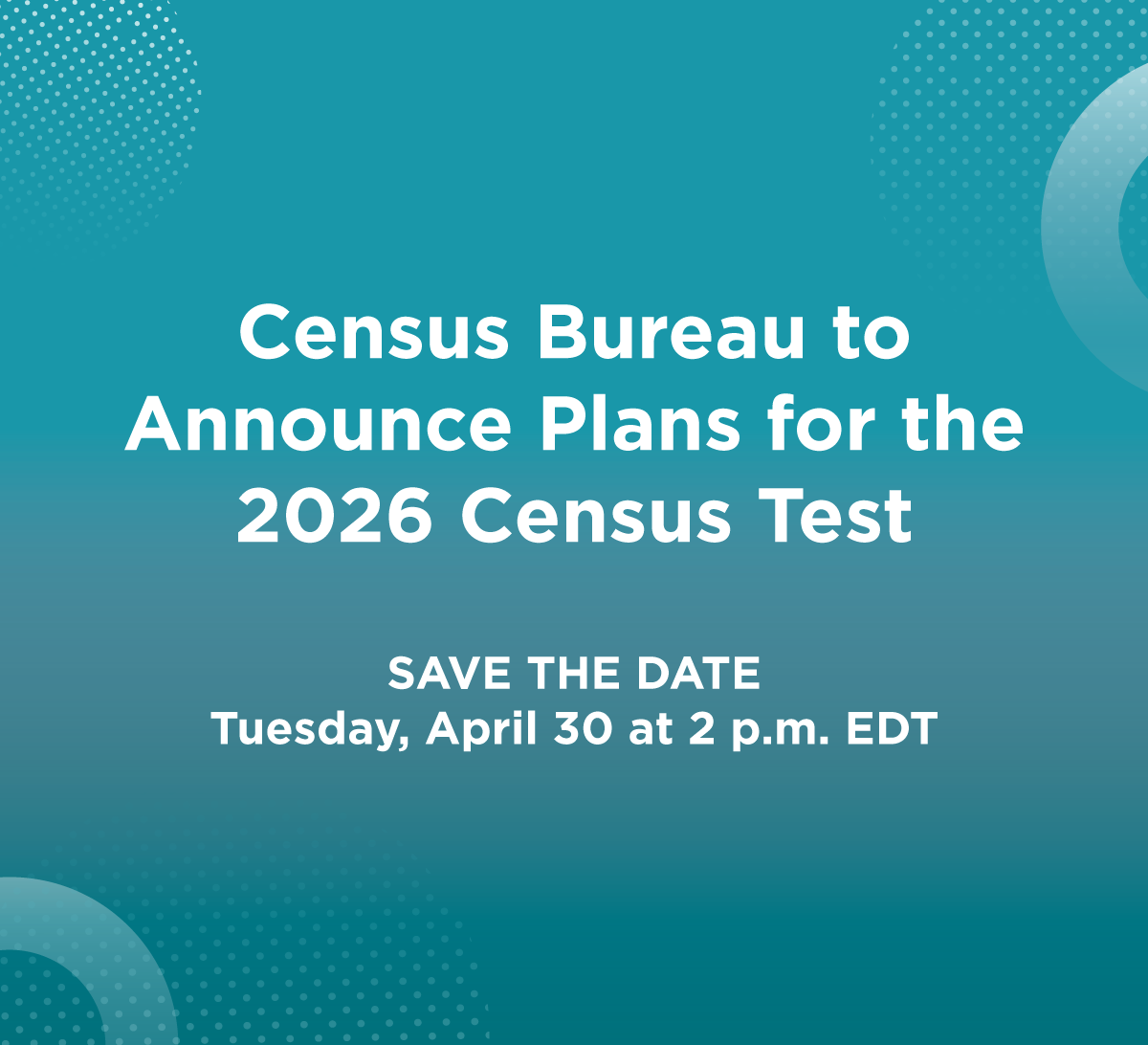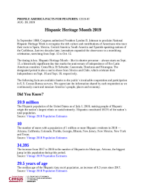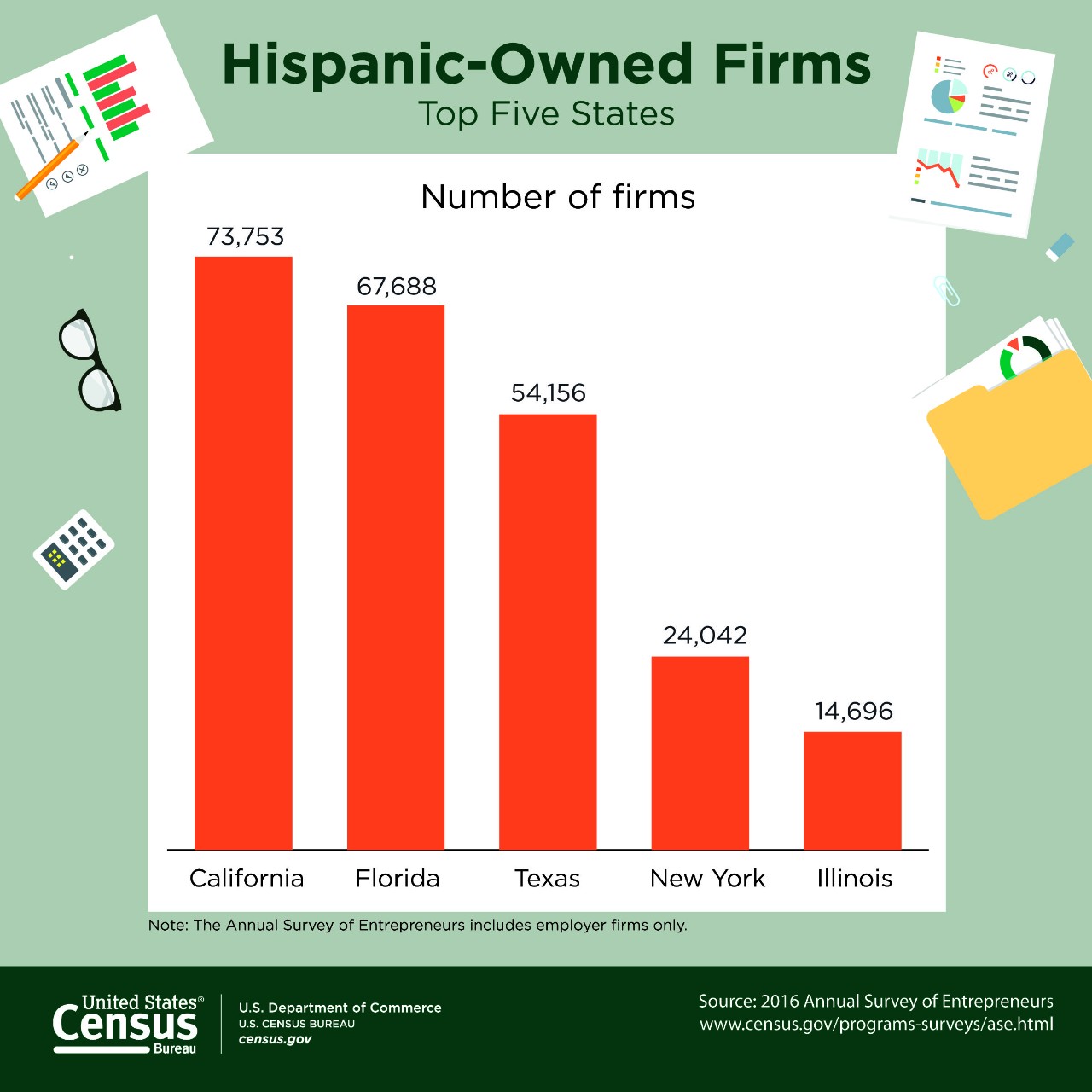Hispanic Heritage Month 2019
In September 1968, Congress authorized President Lyndon B. Johnson to proclaim National Hispanic Heritage Week to recognize the rich culture and contributions of Americans who trace their roots to Spain, Mexico, Central America, South America and Spanish-speaking nations of the Caribbean. Just two decades later, lawmakers expanded the observance to a monthlong celebration, stretching from Sept. 15 to Oct. 15.
The timing is key. Hispanic Heritage Month – like its shorter precursor – always starts on Sept. 15, a historically significant day that marks the anniversary of independence of five Latin American countries: Costa Rica, El Salvador, Guatemala, Honduras and Nicaragua. The designated period is also a nod to those from Mexico and Chile, which celebrate their independence on Sept. 16 and Sept. 18, respectively.
The following facts are available thanks to the public’s invaluable cooperation and participation in U.S. Census Bureau surveys. We appreciate the information shared by each respondent as we continuously count and measure America’s people, places and economy.
Did You Know?
59.9 million
The Hispanic population of the United States as of July 1, 2018, making people of Hispanic origin the nation’s largest ethnic or racial minority. Hispanics constituted 18.3% of the nation’s total population.
Source:
10
The number of states with a population of 1 million or more Hispanic residents in 2018 — Arizona, California, Colorado, Florida, Georgia, Illinois, New Jersey, New Mexico, New York and Texas.
Source:
34,395
The increase from 2017 to 2018 in the number of Hispanics in Maricopa, Arizona, the biggest jump in this population during this period.
Source:
29.5 years of age
The median age of the Hispanic (any race) population, an increase of 0.3 years since 2017.
Source:
More Stats
See a detailed profile on the Hispanic population from the 2017 American Community Survey. Statistics include:
- Families
- Housing
- Languages
- Education
- Jobs
- Income and Poverty
- Health Insurance
- Selected Characteristics of the Foreign-Born Population by Region of Birth: Latin America
Previous Facts for Features
The following is a list of observances typically covered by the Census Bureau’s Facts for Features series:
| Black (African American) History Month (February) Women's History Month (March) Irish-American Heritage Month (March) Asian/Pacific American Heritage Month (May) The Fourth of July (July 4) Anniversary of Americans With Disabilities Act (July 26) Hispanic Heritage Month (Sept. 15-Oct. 15) Halloween (Oct. 31) American Indian/Alaska Native Heritage Month (November) Veterans Day (Nov. 11) Thanksgiving Day/Holiday Season (November-December) |
Editor’s note: The preceding data were collected from a variety of sources and may be subject to sampling variability and other sources of error. Facts for Features are customarily released about two months before an observance in order to accommodate magazine production timelines. Questions or comments should be directed to the Census Bureau’s Public Information Office: telephone: 301-763-3030; or e-mail: pio@census.gov.
Profile America's Facts for Features provides statistics related to observances and holidays not covered by Stats for Stories. For observances not listed below, visit our Stats for Stories web page.
Profile America's Stats for Stories provides links to timely story ideas highlighting the Census Bureau's newsworthy statistics that relate to current events, observances, holidays, and anniversaries. The story ideas are intended to assist the media in story mining and producing content for their respective audiences.









